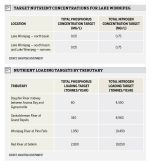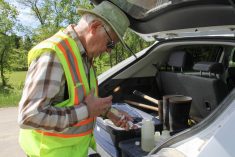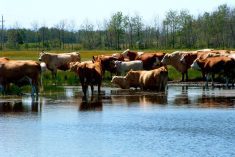The Turtle Mountain Conservation District is moving forward rapidly and accessing funding pots that weren’t available before.
Last year, the district became the first to have a provincially approved Integrated Watershed Management Plan. The approval allowed the board to prioritize its programming and better focusing on the watershed’s needs.
To date, it remains the only C. D. to have its plan approved by the provincial government.
An approved plan allows the district to more easily secure funding, not just from the province but other funding agencies. This funding goes over and above the regular program budget.
Read Also

Mazergroup’s Bob Mazer dies
Mazergroup’s Bob Mazer, who helped grow his family’s company into a string of farm equipment dealerships and the main dealer for New Holland machinery in Saskatchewan and Manitoba, died July 6 from cancer.
Andrea McLean, who has been manager of the district for the past year, said the district’s goals and missions were clearly laid out and targeted strategies were easy to plan.
Because of the IWMP, McLean said they were able to apply for funds from the Lake Winnipeg Stewardship Board and Environment Canada for a riparian overhaul on the Souris River. If the project is approved, Manitoba Water Stewardship will supply matching funds.
The mammoth project will be done in a loose partnership with the West Souris Conservation District.
If the funds are approved, it will allow staff from both C. D. s to do a full assessment of the land on either side of the river from the border to the town of Souris.
Areas of concern will be identified and prioritized. Landowners will be offered 85 per cent of the cost of repairs or system changes. For example, if a landowner still waters cattle in the Souris River, he or she could receive assistance to install riparian fencing and off-site watering systems.
“This will get the cattle back and restore the riparian area around the Souris River,” said McLean.
She said even though the funds are being secured through Lake Winnipeg Basin Stewardship fund and Environment Canada, the project meets their criteria of getting nutrients out of the water that would eventually make its way to the big lake.
The Souris River flows into the Assiniboine River, which eventually flows into the Red River and up to Lake Winnipeg.
“Reducing the number of cattle in the stream is going to reduce the nutrients going in there. It’s also going to be a benefit because you can reduce the coliforms as well,” she said.
She said people often continue using the river for their cattle due to economics. If the funding comes through, the C. D. can assist them with alternatives.
“Maybe you can’t do it at 50 per cent funding, which is what we offer, but maybe you can do it at 85 per cent, and that’s OK.”
Funding approval remains in limbo, but Sujata Raisinghani, media relations for Environment Canada said proposals that come about as a result of provincial watershed management planning and show clear consultation with surrounding community members are good candidates.
“The Lake Winnipeg Stewardship Fund is an example of how the Government of Canada is working with provincial governments as well as local community stakeholders to improve the state of the Lake Winnipeg Basin,” she said via an e-mail.
Watershed planning involves extensive community meetings. While the people who attend planning meetings are basically “the converted,” McLean said it’s always nice to see new people attending. She feels part of the C. D. s job is to provide people with the information they need to go about improving the watershed.
For now, funding for the projects will only be accessed by landowners in the TMCD, as the WSCD has yet to complete an IWMP.


















